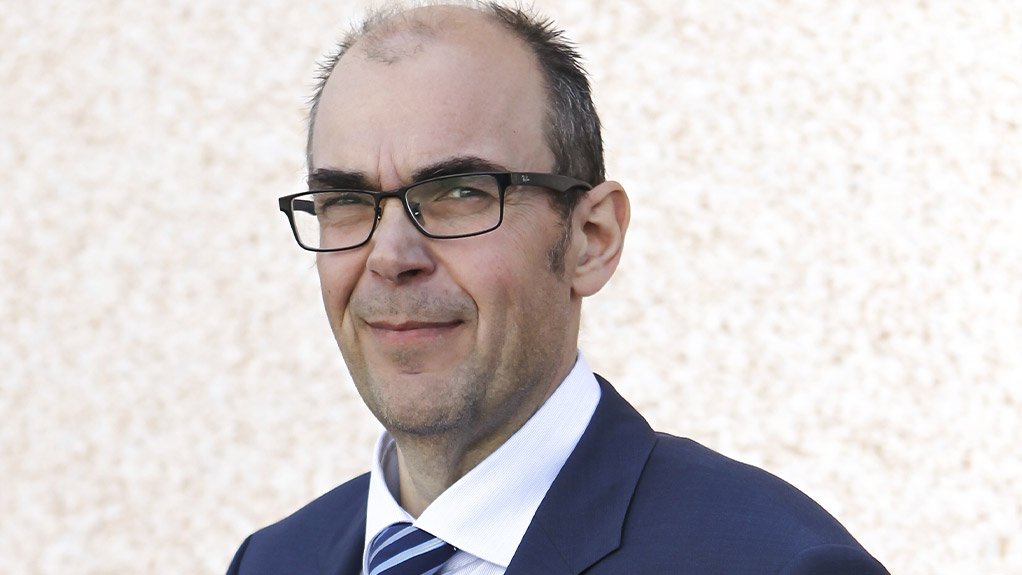South Africa’s Energy Future Hinges on Flexibility, Not Just Renewables
This article has been supplied.
By: Tord Johnsson - General Manager, Strategic Relations and Business, Africa at Wärtsilä Energy
While South Africa recently marked 200 consecutive days without load shedding, the deeper challenges within its energy system remain unresolved. This period of relief should not be seen as a long-term solution. The outdated power generation and inflexible power grid require urgent transformation and without integrating renewable energy effectively, the risk of future disruptions looms large.
True energy stability demands more than the absence of load shedding. It requires a dynamic, flexible power system that can support the country’s renewable ambitions. Simply expanding renewable capacity won’t suffice without an adaptable grid. Other countries have integrated up to 40% renewables, but face challenges like supply intermittency. To navigate this, South Africa needs a flexible energy framework to ensure stability and reliability.
South Africa is at a crucial turning point in its energy journey. The nation’s persistent power shortages and aging infrastructure make it clear: the future must incorporate flexibility from the start. The decisions made now will shape South Africa’s energy landscape for generations, and adding flexible solutions early on is key to making the most of upcoming investments in renewable power. According to a 2022 Wärtsilä power system model, combining 40GW of wind and solar with 9GW of flexible gas plants and 7GW of energy storage by 2032 could save South Africa US$26 billion while cutting emissions by 17%.
Gas plays a crucial role in bridging the gap to a fully renewable future. While there is a lot of discussion about green fuels like hydrogen and ammonia eventually replacing traditional fossil fuels, the immediate need for flexibility makes gas the most practical short-term solution. It allows renewable energy systems to operate efficiently now; while also ensuring they are ready to transition to greener alternatives in the future.
The South African government’s updated Integrated Resource Plan 2023 (IRP) reinforces this point, including gas as a critical element of the country’s future energy strategy. Initiatives like the Gas Independent Power Producer Procurement Programme aim to add 2GW of flexible gas power to the national grid. For this plan to succeed and meet current system requirements, all parties involved need to remain focused on the need for flexibility, ensuring that the programme proceeds as intended.
Wärtsilä’s experience in other countries demonstrates the benefits of flexibility. In Mexico, we supplied two multi-fuel power plants, totalling 600MW, to the state-owned Comisión Federal de Electricidad (CFE). These plants primarily run on gas but can use liquid fuel as a backup, providing flexible power generation for the region. The Mexicali Oriente and Parque Industrial plants meet high demand during summer while providing grid-balancing services year-round. In El Salvador, we worked with Engineering, Procurement and Construction (EPC) to provide 378MW for Energía del Pacífico, the largest and most efficient power plant in the country. Powered by liquefied natural gas (LNG), it marks a significant milestone in Central America's energy landscape by offering clean, reliable, and flexible power.
So, how can South Africa build flexibility into its future power systems? Wärtsilä proposes three critical steps to accelerate progress.
First, adopt technologies that complement renewables, such as battery storage for short-term fluctuations and flexible gas plants for larger changes. Gas engines that can start quickly and run efficiently at partial loads, paired with battery storage, offer an effective solution to manage renewable energy’s variability.
Second, overhaul the power trading system, reducing trading intervals to better match supply with demand. The current one-hour trading blocks are too slow to accommodate fluctuating renewable output. Shortening intervals to 5 or 15 minutes would better align supply with demand, improving forecasting, increasing resilience, and reducing the need for reserves, which could ultimately lower costs.
Lastly, implement policies like capacity payments and expand ancillary service markets to incentivise investments in flexible technologies. This will help encourage investments in flexible technologies and create a more adaptable and resilient energy grid.
South Africa stands on the cusp of an energy revolution. The decisions made today will shape the country’s infrastructure for decades. By embedding flexibility into the energy system now, as we have seen successfully done in Latin America, South Africa can unlock the full potential of its renewable investments, avoid energy shortfalls, and set itself on a sustainable path to a cleaner, more resilient future.
Article Enquiry
Email Article
Save Article
Feedback
To advertise email advertising@creamermedia.co.za or click here
Comments
Announcements
What's On
Subscribe to improve your user experience...
Option 1 (equivalent of R125 a month):
Receive a weekly copy of Creamer Media's Engineering News & Mining Weekly magazine
(print copy for those in South Africa and e-magazine for those outside of South Africa)
Receive daily email newsletters
Access to full search results
Access archive of magazine back copies
Access to Projects in Progress
Access to ONE Research Report of your choice in PDF format
Option 2 (equivalent of R375 a month):
All benefits from Option 1
PLUS
Access to Creamer Media's Research Channel Africa for ALL Research Reports, in PDF format, on various industrial and mining sectors
including Electricity; Water; Energy Transition; Hydrogen; Roads, Rail and Ports; Coal; Gold; Platinum; Battery Metals; etc.
Already a subscriber?
Forgotten your password?
Receive weekly copy of Creamer Media's Engineering News & Mining Weekly magazine (print copy for those in South Africa and e-magazine for those outside of South Africa)
➕
Recieve daily email newsletters
➕
Access to full search results
➕
Access archive of magazine back copies
➕
Access to Projects in Progress
➕
Access to ONE Research Report of your choice in PDF format
RESEARCH CHANNEL AFRICA
R4500 (equivalent of R375 a month)
SUBSCRIBEAll benefits from Option 1
➕
Access to Creamer Media's Research Channel Africa for ALL Research Reports on various industrial and mining sectors, in PDF format, including on:
Electricity
➕
Water
➕
Energy Transition
➕
Hydrogen
➕
Roads, Rail and Ports
➕
Coal
➕
Gold
➕
Platinum
➕
Battery Metals
➕
etc.
Receive all benefits from Option 1 or Option 2 delivered to numerous people at your company
➕
Multiple User names and Passwords for simultaneous log-ins
➕
Intranet integration access to all in your organisation




















